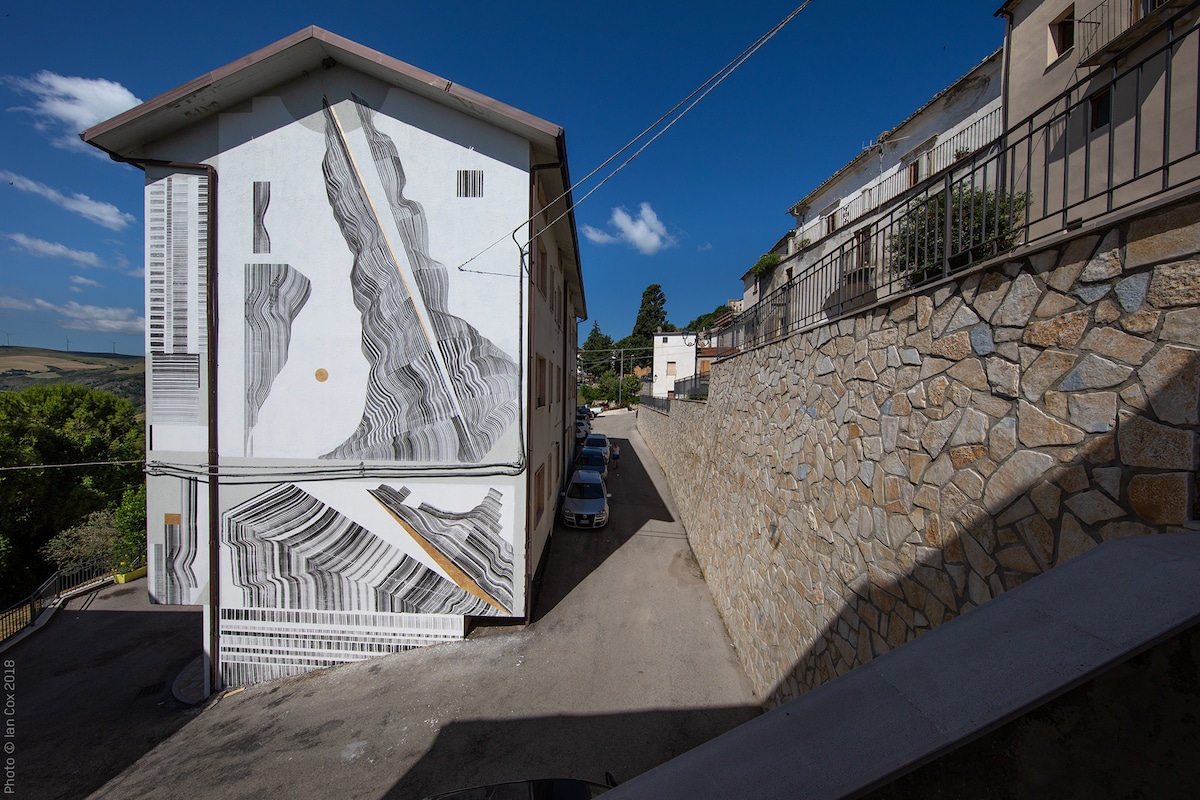
“Dorge shugden” by 2501. (Photo: Ian Cox)
For the third year, street artists invaded a small village in central Italy, transforming it into a cultural playground over the course of four days. Civitacampomarano, located in Italy’s underpopulated Molise region, has seen its population dwindle from 3,500 after World War II to less than a hundred who call the village home today. Since 2016, CVTà Street Fest has aimed to use street art in order to spotlight the charm and history of the village.
The festival—which was created by Italian street artist (and granddaughter of a resident of the town) Alice Pasquini who worked with a local cultural organization—saw more than 7,000 visitors flow through the streets this year. Artists 2501, Alberonero, MP5, and Brus added their artistic touches to buildings around town—all offered up by locals—while an expanded program saw increased local participation.
Groups of volunteers welcomed visitors, with high school students providing tours of the walls, while groups of local women taught workshops on how to make cavatelli, a local pasta, and gave demonstrations on lacemaking. Artist Bruno Manuele was given the spotlight in the town’s medieval castle, which showcased the self-taught artist’s sculpture made from olive wood and local stone. By using contemporary urban art to draw interest, organizers hope to also spotlight the incredible traditions of a town that shouldn’t be left behind.
Continuing to transform the streets of Civitacampomarano into a top destination for art, all four invited artists integrated their work seamlessly into the surroundings. 2501’s abstract lines radiated from a halo perched high on the roof of one of the village’s taller buildings while graffiti writer Brus created a tag that pays homage to traditional calligraphy. The Roman writer’s wall is in contrast to his live performance, where a packed crowd watched Brus masterfully decorate a truck with more traditional graffiti lettering, bringing a bit of gritty urban flare to the tiny town.
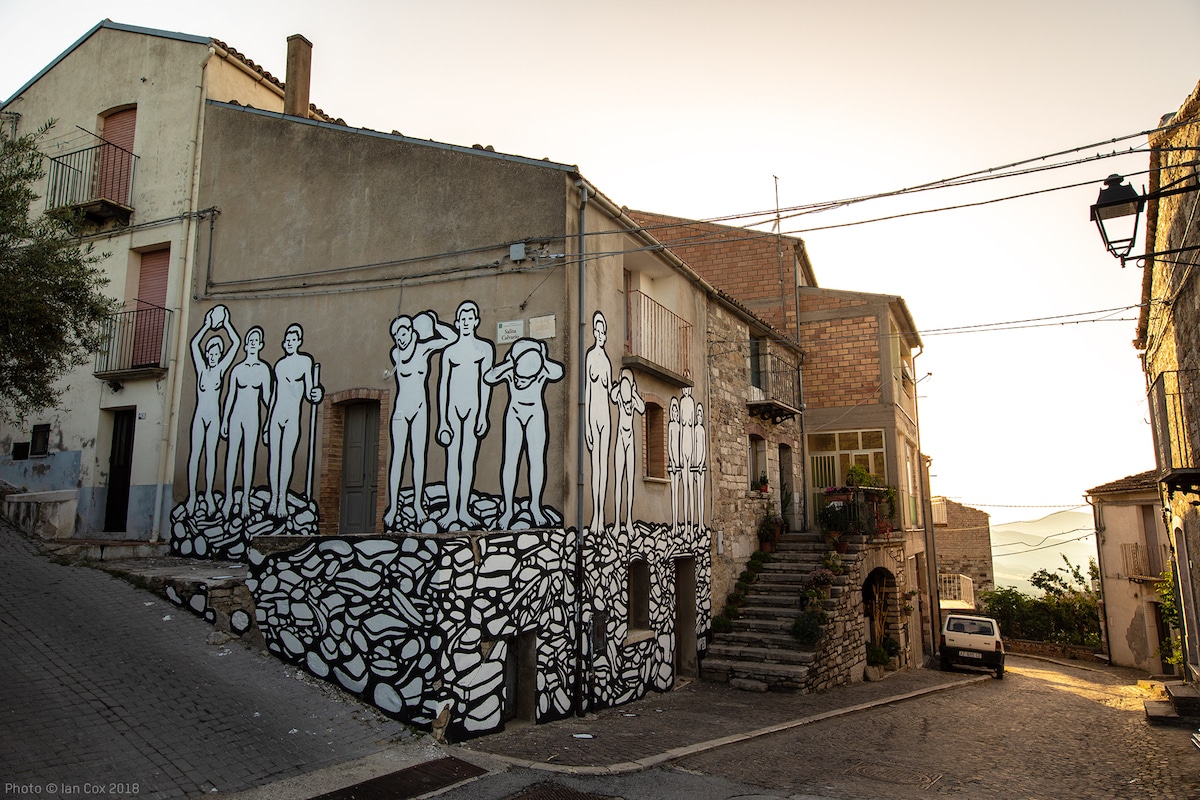
“One Army” by MP5. (Photo: Ian Cox)
MP5 created a mural, titled One Army, that unfolded across two facades of the same home, perched high on a hill leading out of town. Determined yet weary, in some way the artist’s figures mirror the tenacity of those left to carry on the legacy of the village. Just around the corner, Alberonero worked diligently with the town’s carpenter and blacksmith to created Supercivita, a three-level totem that asks viewers to contemplate the world around them.
By moving around the sculpture, the central mirrored cube creates dazzling illusions that blur the line between reality and fantasy, while forcing spectators not to take their surroundings for granted. And in a surprise appearance, Roman artist UNO returned to the festival to create a colorful homage to Vincenzo Cuoco, an acclaimed 19th-century writer born in Civitacampomarano.
Where will the village go from here? And can street art turn back the tides of depopulation? That remains to be seen. But with visitors continuing to trickle in throughout the year to visit the walls, new businesses opening, and Airbnb investing in the renovation of a building as part of their program to bring people to smaller towns in Italy, what is certain is that new hope has arrived.
More than 7,000 visitors came to Civitacampomarano for CVTà Street Fest. This small village normally has a population of fewer than 400 residents.
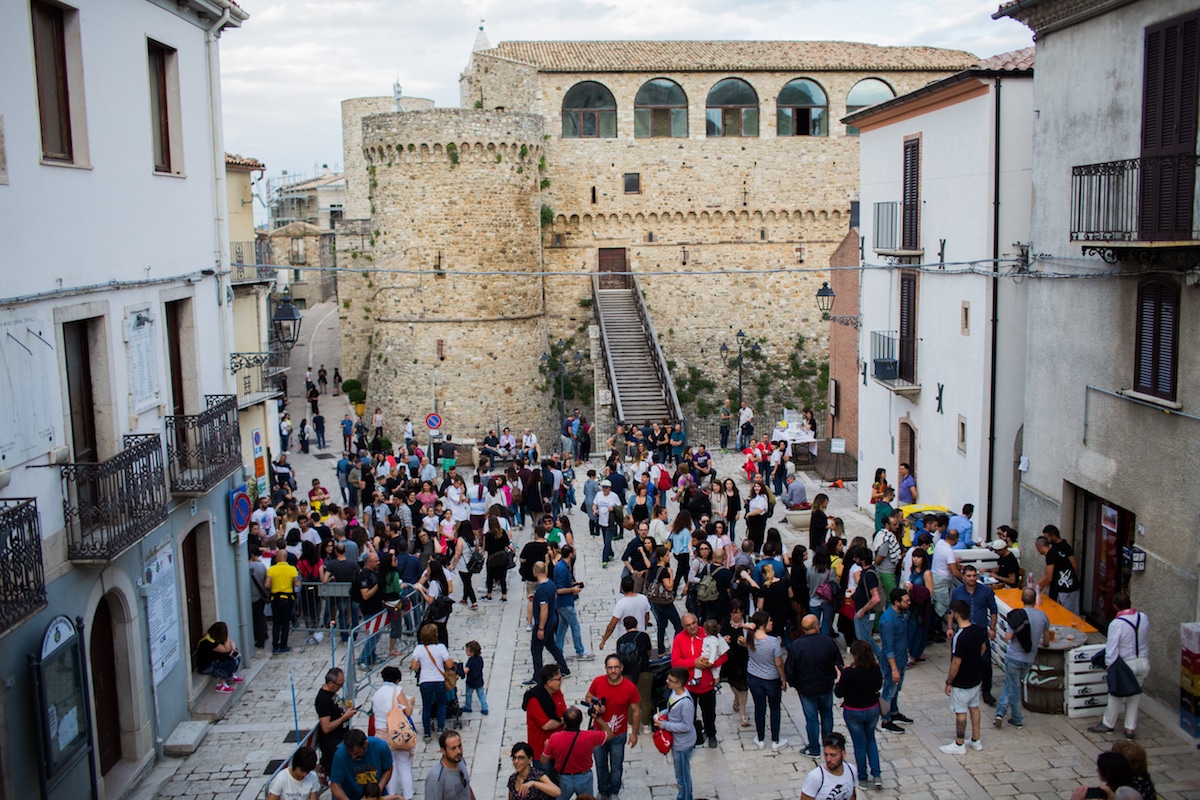
Photo: Alessandro Tricarico

Photo: Alessandro Tricarico
Over four days, street artists from across Italy integrated their work into the small village in Molise.
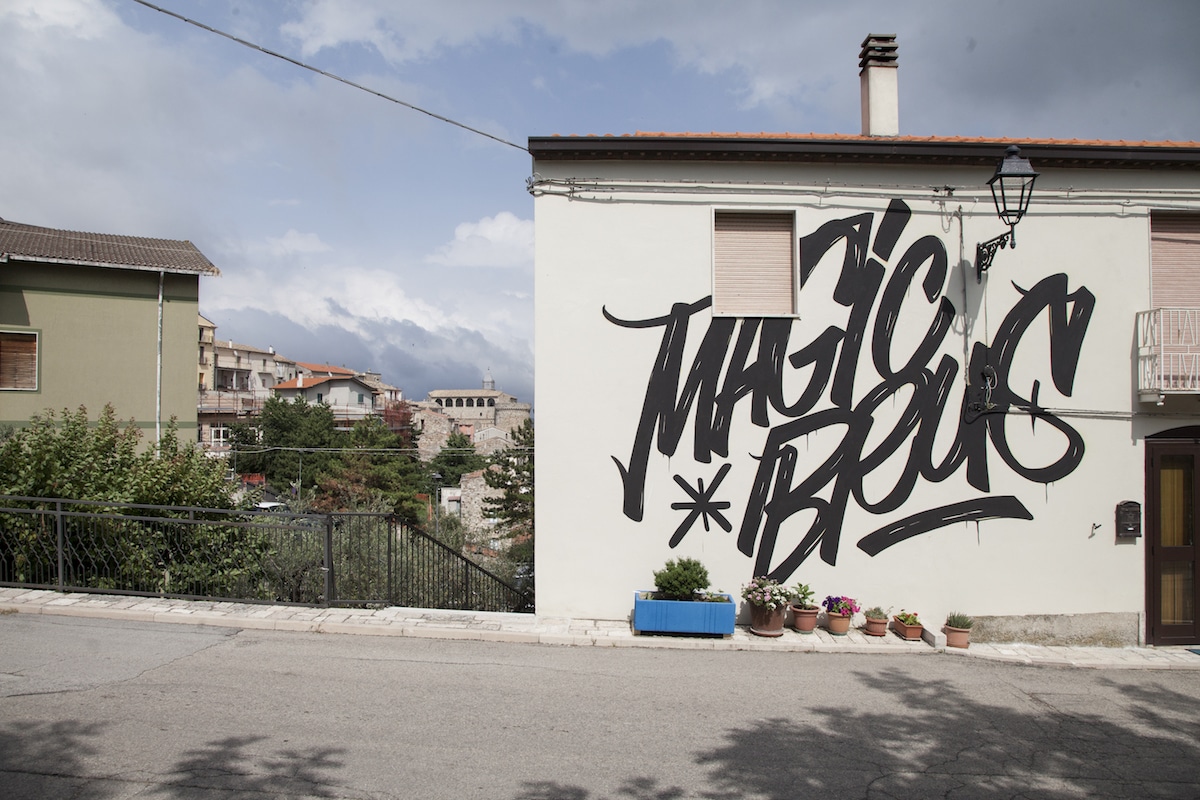
Brus. (Photo: Alessia di Risio)
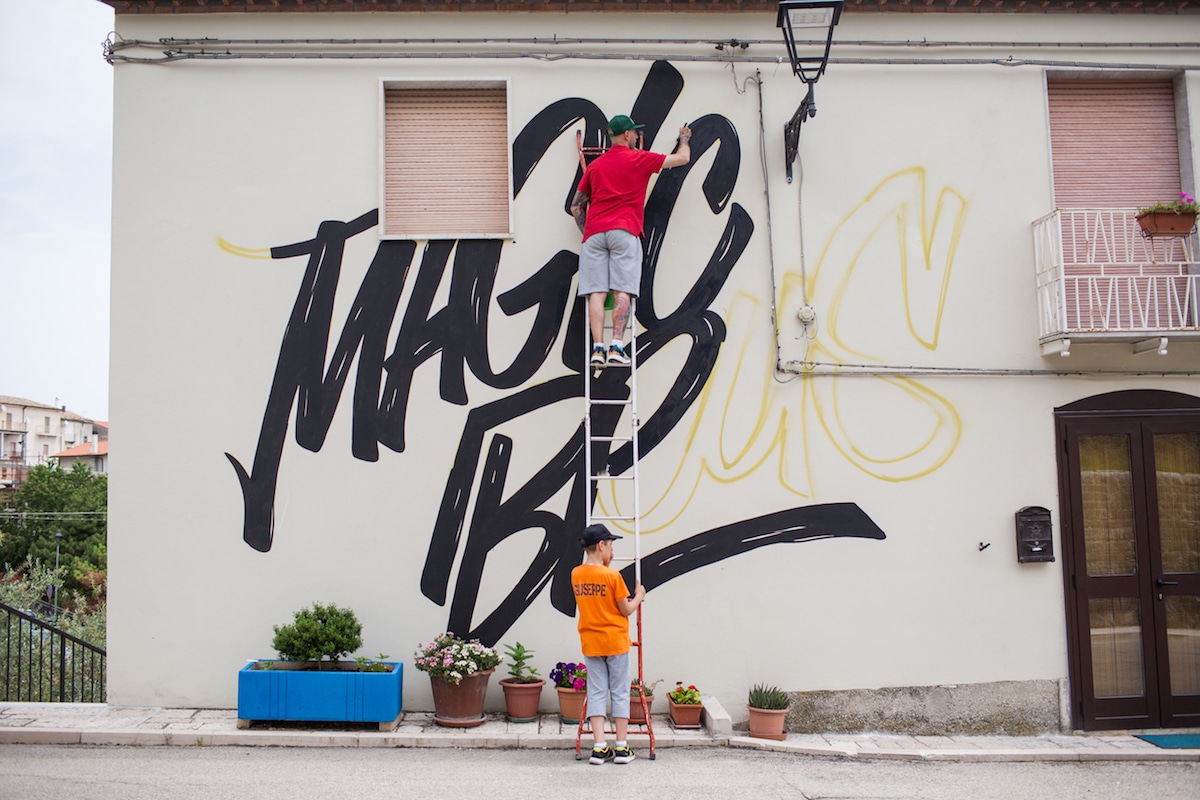
Brus. (Photo: Alessandro Tricarico)
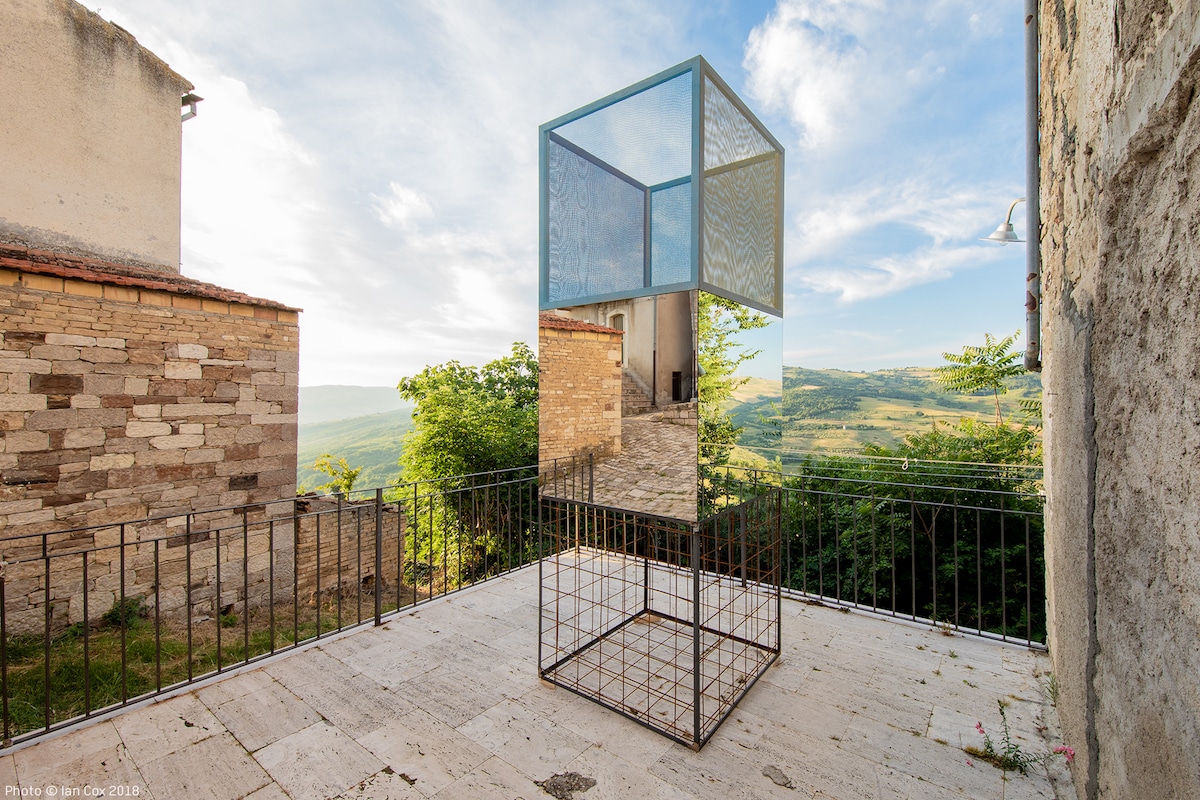
“Supercivita” by Alberonero. (Photo: Ian Cox)
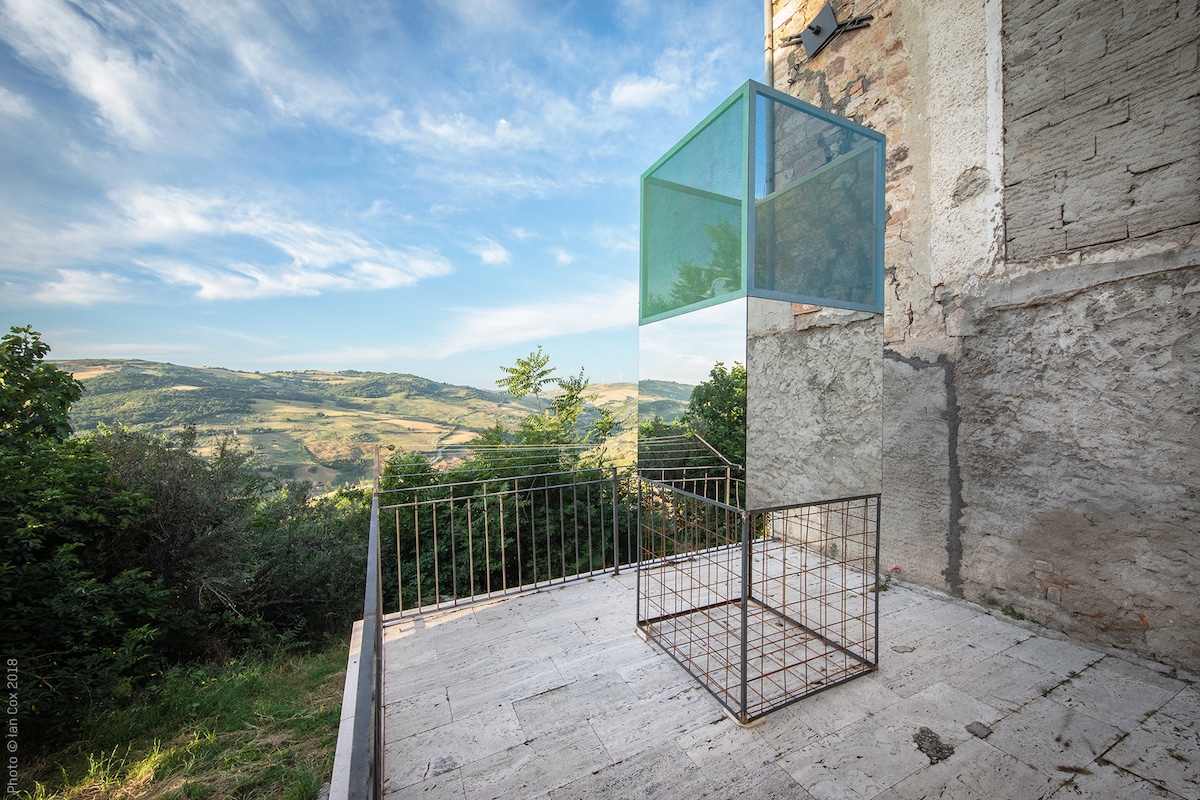
“Supercivita” by Alberonero. (Photo: Ian Cox)
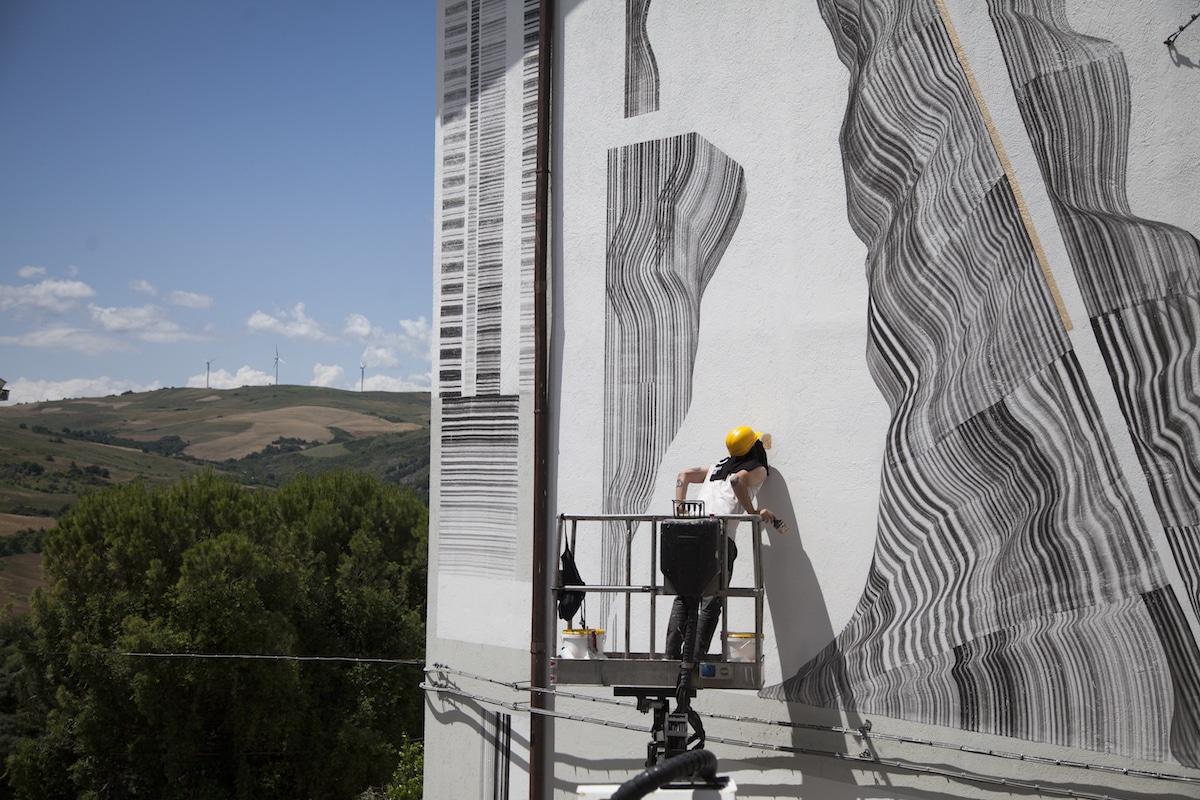
Before finishing his mural, 2501 gives the wall a kiss. (Photo: Alessia di Risio)
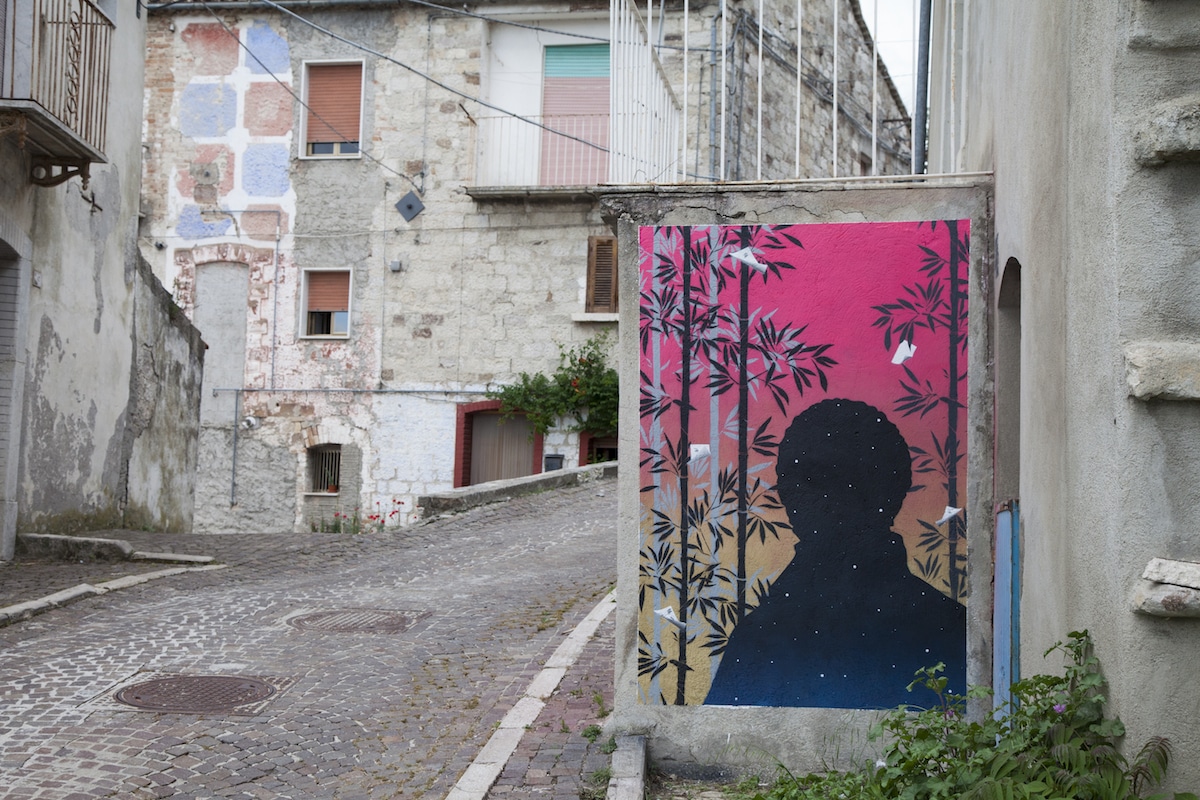
“Vincenzo Cuoco Stellato” by UNO. (Photo: Alessia di Risio)
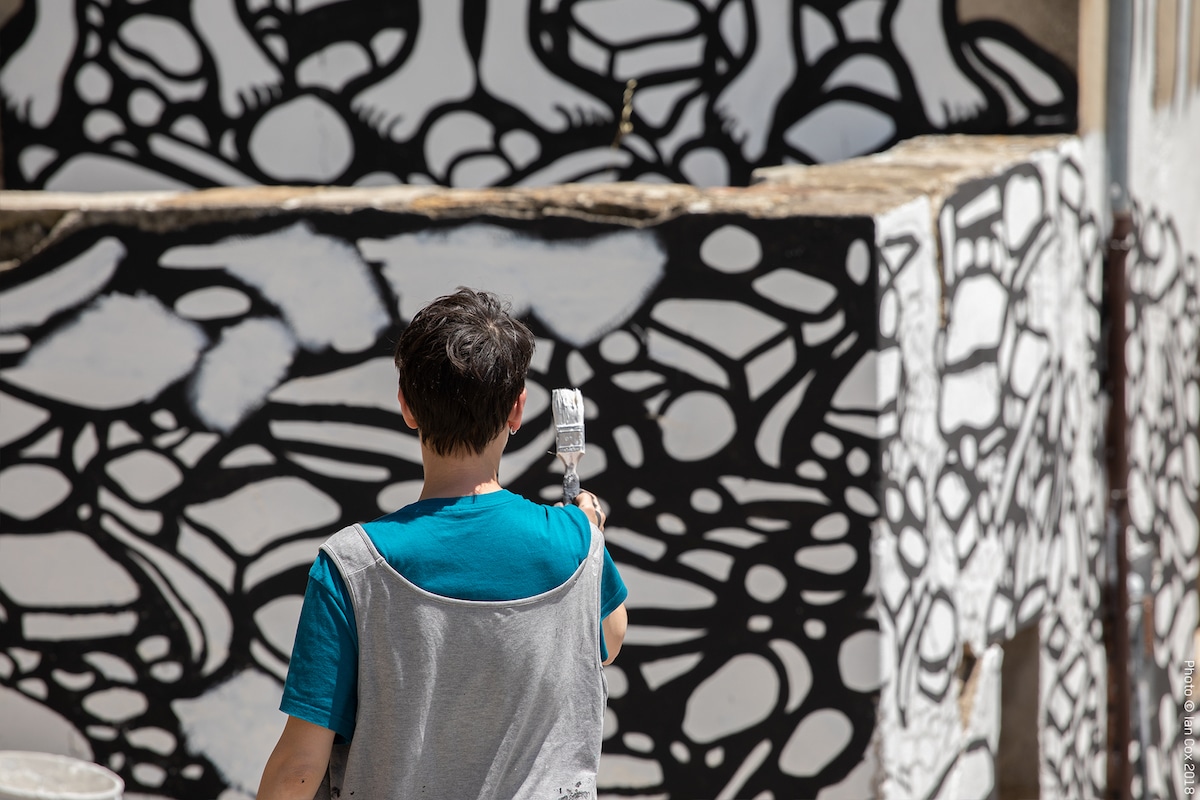
MP5. (Photo: Ian Cox)
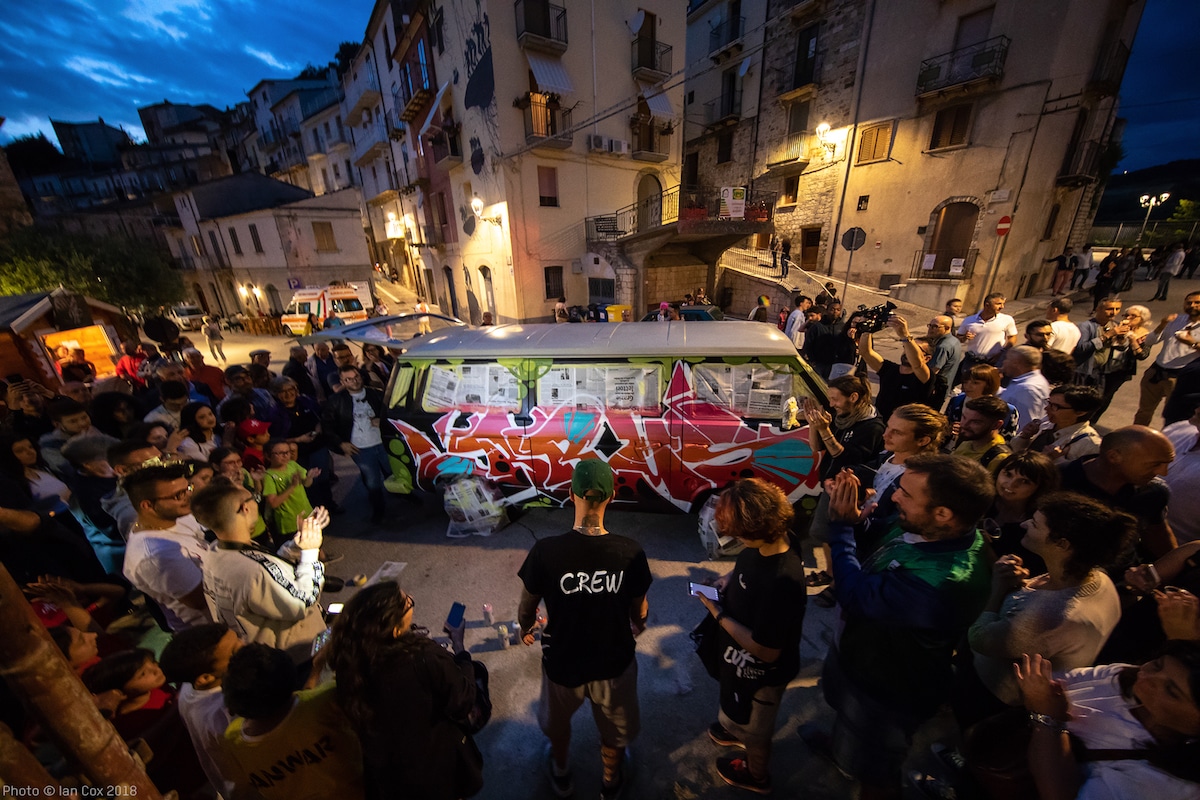
Live performance by Brus. (Photo: Ian Cox)
A program of workshops, exhibitions, and tours run by local volunteers helped spotlight traditions like lacemaking.
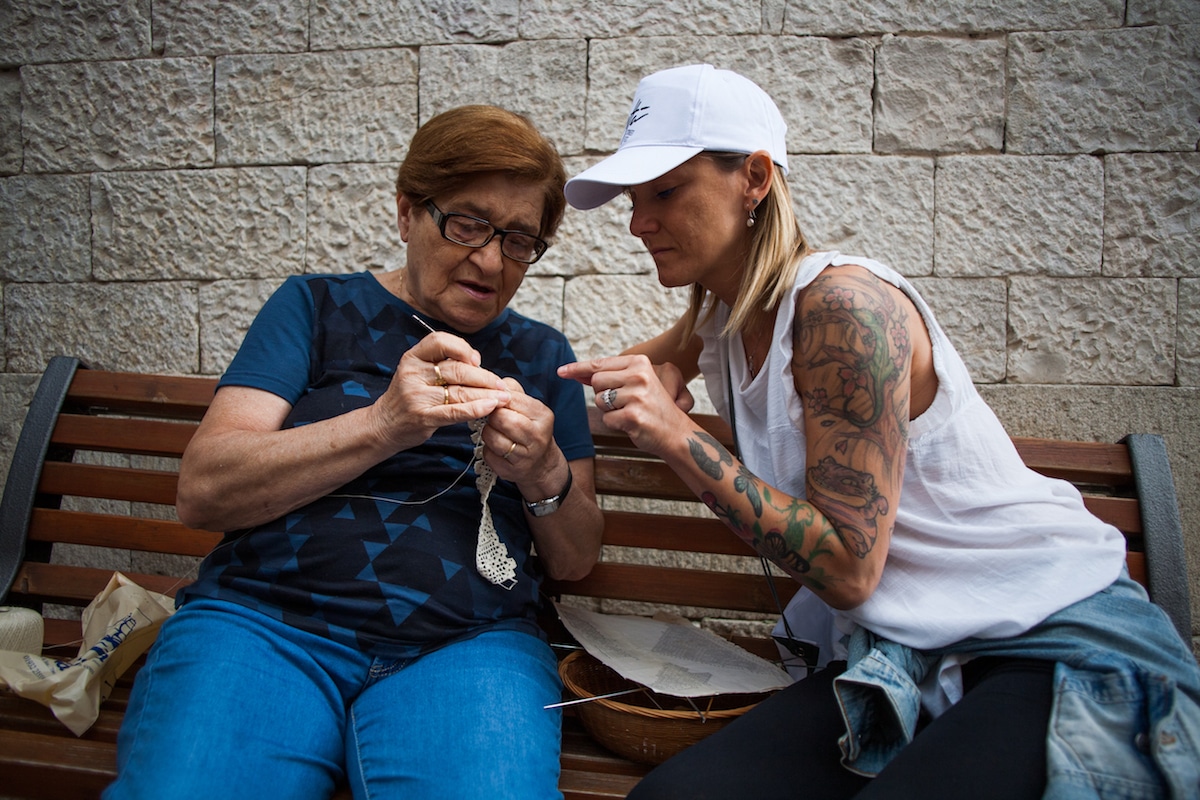
Photo: Alessandro Tricarico
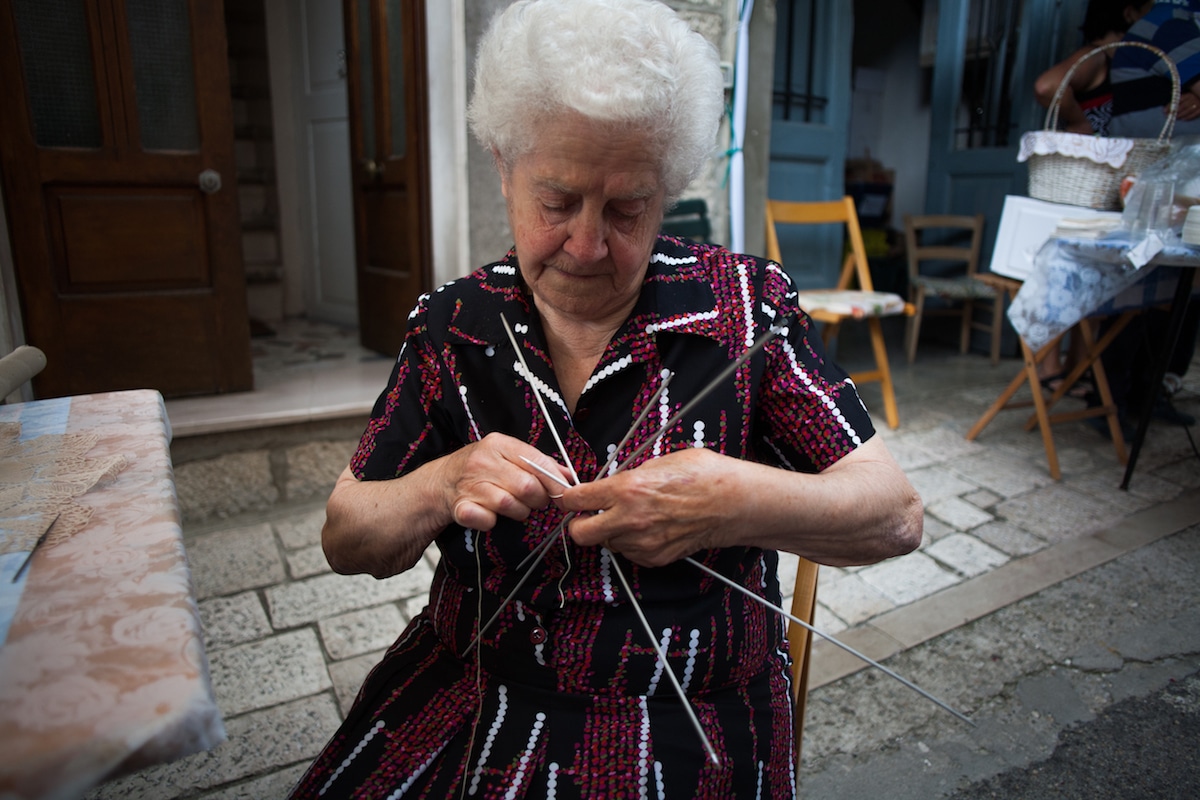
Photo: Alessandro Tricarico
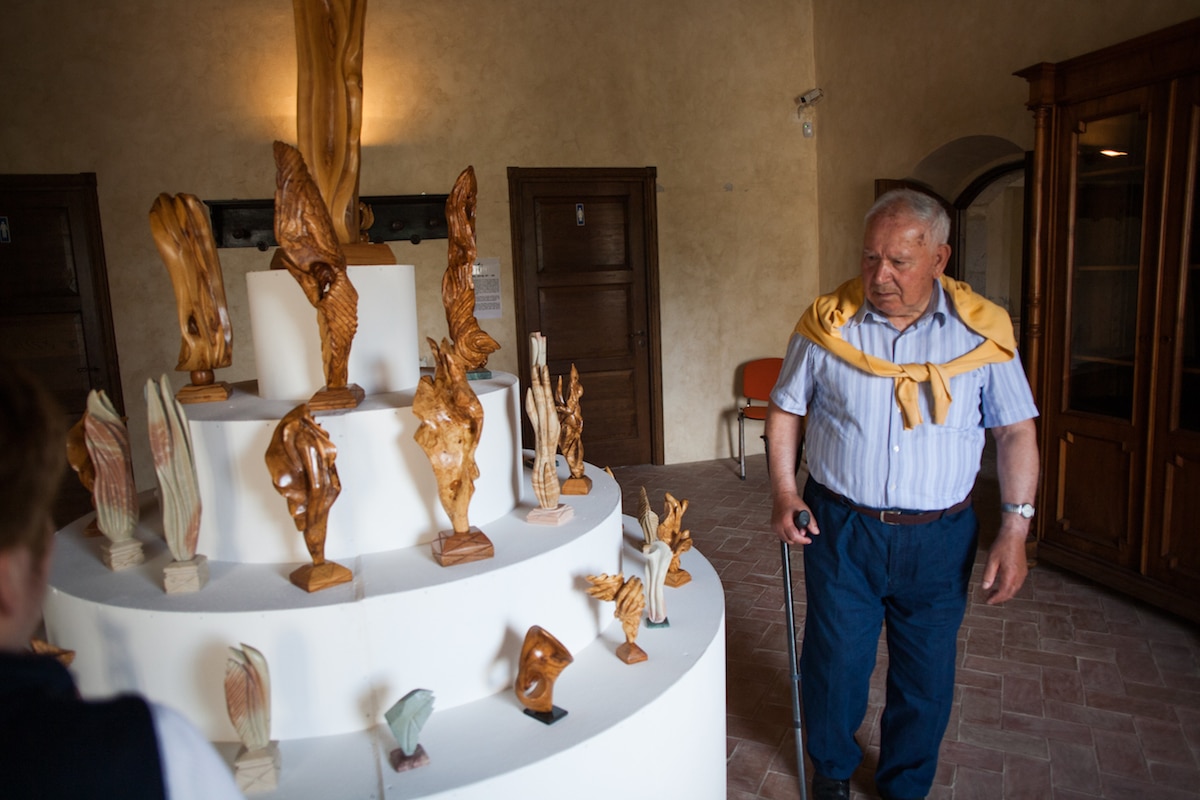
Photo: Alessandro Tricarico
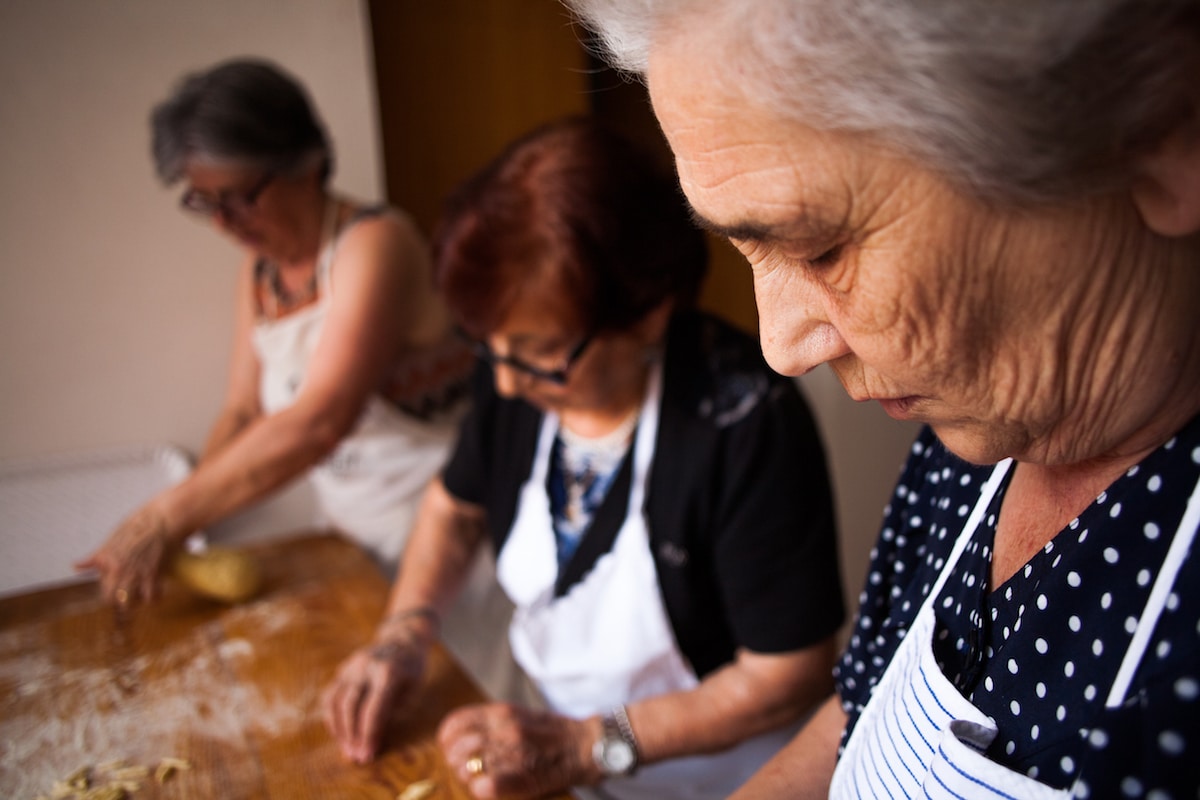
Photo: Alessandro Tricarico
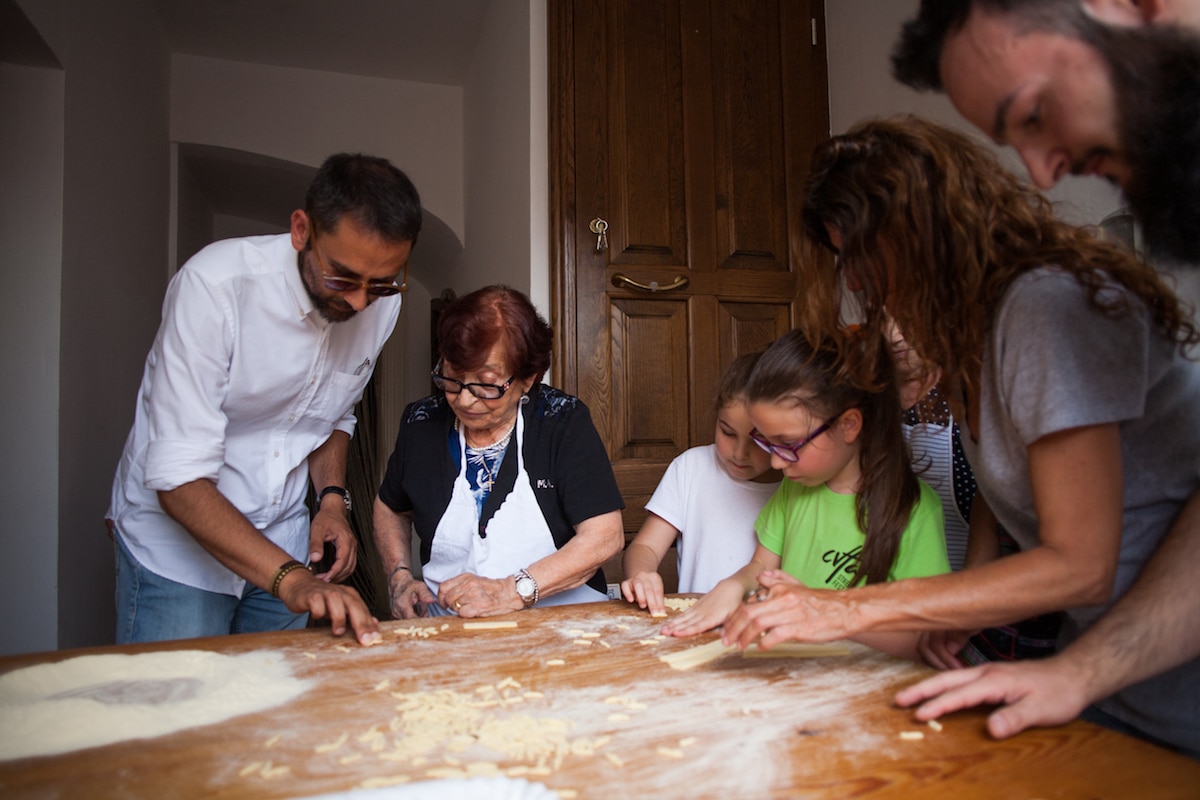
Photo: Alessandro Tricarico
With tourists coming year-round to visit the art, there’s hope that the festival can spark a rebirth in the village.
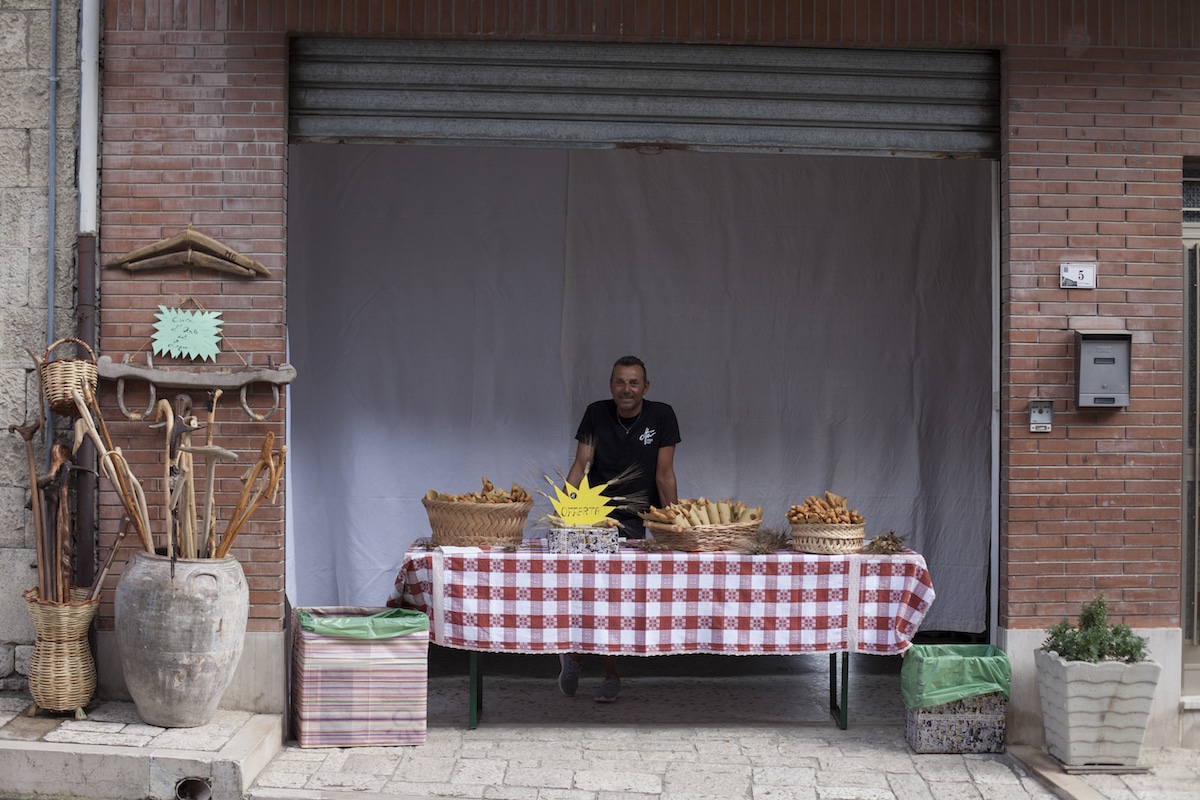
Photo: Alessia di Risio
